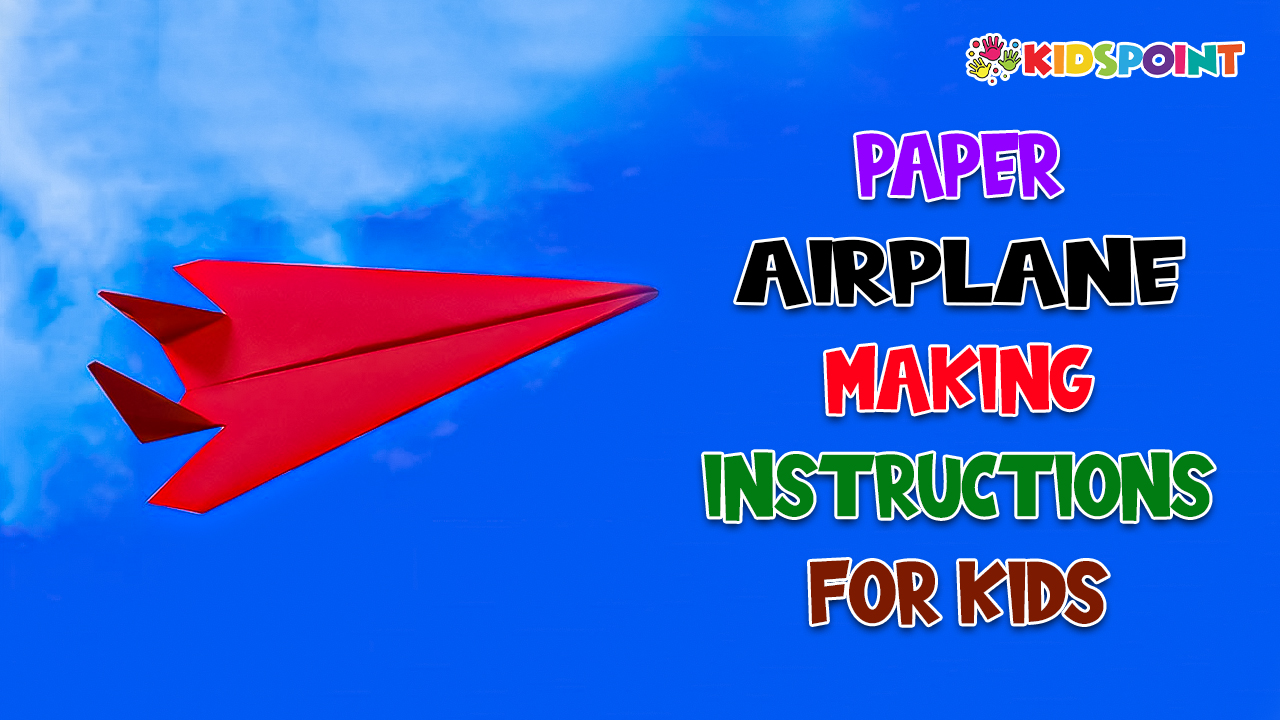Paper airplanes are timeless toys that have been entertaining children for generations. Not only are they fun to make and fly, but they also provide a valuable opportunity for children to learn about aerodynamics and physics in an interactive way. In this guide, brought to you by The Kids Point, we’ll explore step-by-step instructions for making various types of paper airplanes, along with explanations of the science behind their flight.
Chapter 1: The Basics of Paper Airplane Making
- Materials Needed: Introduce the materials required to make paper airplanes, such as sheets of paper (preferably lightweight and rectangular), scissors, and markers for decoration.
- Safety Tips: Provide safety tips for using scissors and handling paper to ensure that children can enjoy making paper airplanes without any accidents.
Chapter 2: Understanding Aerodynamics
- What is Aerodynamics?: Explain the concept of aerodynamics in simple terms, highlighting how air flows around objects and affects their movement.
- Lift and Drag: Describe the principles of lift and drag and how they influence the flight of paper airplanes. Use illustrations or diagrams to make these concepts easier for kids to understand.
- Gravity and Thrust: Discuss the roles of gravity and thrust in flight, emphasizing how they interact with lift and drag to keep the airplane airborne.
Chapter 3: Folding Techniques for Paper Airplanes
- Basic Fold: Demonstrate the basic fold for making a simple paper airplane, starting with a rectangular sheet of paper and folding it in half lengthwise.
- Wing Design: Explore different wing designs, such as delta wings, swept wings, and winglets, and explain how they affect the airplane’s stability and flight path.
- Adjustments and Fine-Tuning: Teach kids how to make adjustments to their paper airplanes, such as bending the wings or adding weight to the nose, to achieve better performance.
Chapter 4: Step-by-Step Instructions for Making Paper Airplanes
- Dart: Provide detailed instructions for making a classic dart paper airplane, which is easy to fold and flies straight and fast.
- Glider: Introduce the steps for creating a glider paper airplane, which has longer wings and can soar through the air gracefully.
- Looper: Explain how to fold a looper paper airplane, which is designed for stunts and tricks like loops and spins.
- Bulldog: Describe the folding process for a bulldog paper airplane, which has a unique shape resembling a dog’s head and flies in a playful manner.
Chapter 5: Experimenting and Testing
- Flight Experiments: Encourage kids to experiment with different designs and folding techniques to see how they affect the flight of their paper airplanes.
- Test Flights: Provide tips for conducting test flights, such as launching the airplane from different heights and angles to observe its behavior.
- Recording Results: Suggest keeping a journal to record the results of test flights, including observations about how changes to the airplane’s design impact its performance.
Chapter 6: Beyond Paper Airplanes
- STEM Connections: Highlight the connections between paper airplane making and STEM (Science, Technology, Engineering, and Mathematics) concepts, such as geometry, physics, and engineering.
- Real-World Applications: Discuss real-world applications of aerodynamics and flight, such as airplane design and space exploration, to show kids how the principles they learn can be applied in different contexts.
- Inspiring Careers: Introduce various careers related to aviation and aerospace, such as pilot, aerospace engineer, and astronaut, to inspire kids to pursue their interests in science and technology.
Making paper airplanes is not only a fun pastime for kids but also an educational activity that fosters creativity, problem-solving skills, and an understanding of basic scientific principles. By following the instructions in this guide and experimenting with different designs, children can explore the fascinating world of aerodynamics while having a blast with their handmade creations. So, grab some paper and get ready to take flight with your imagination, brought to you by The Kids Point!


